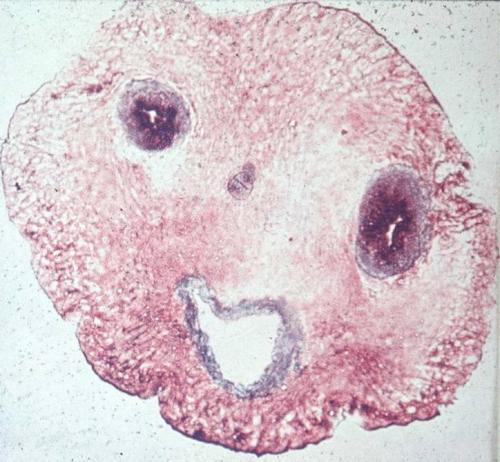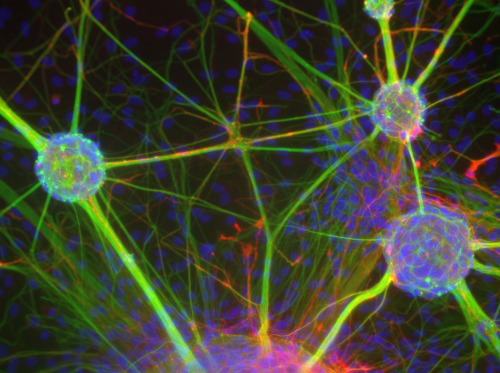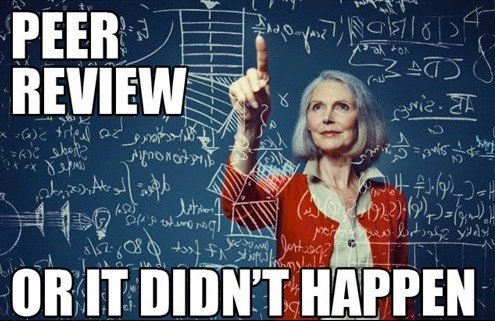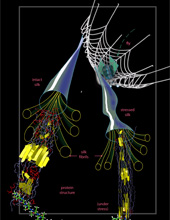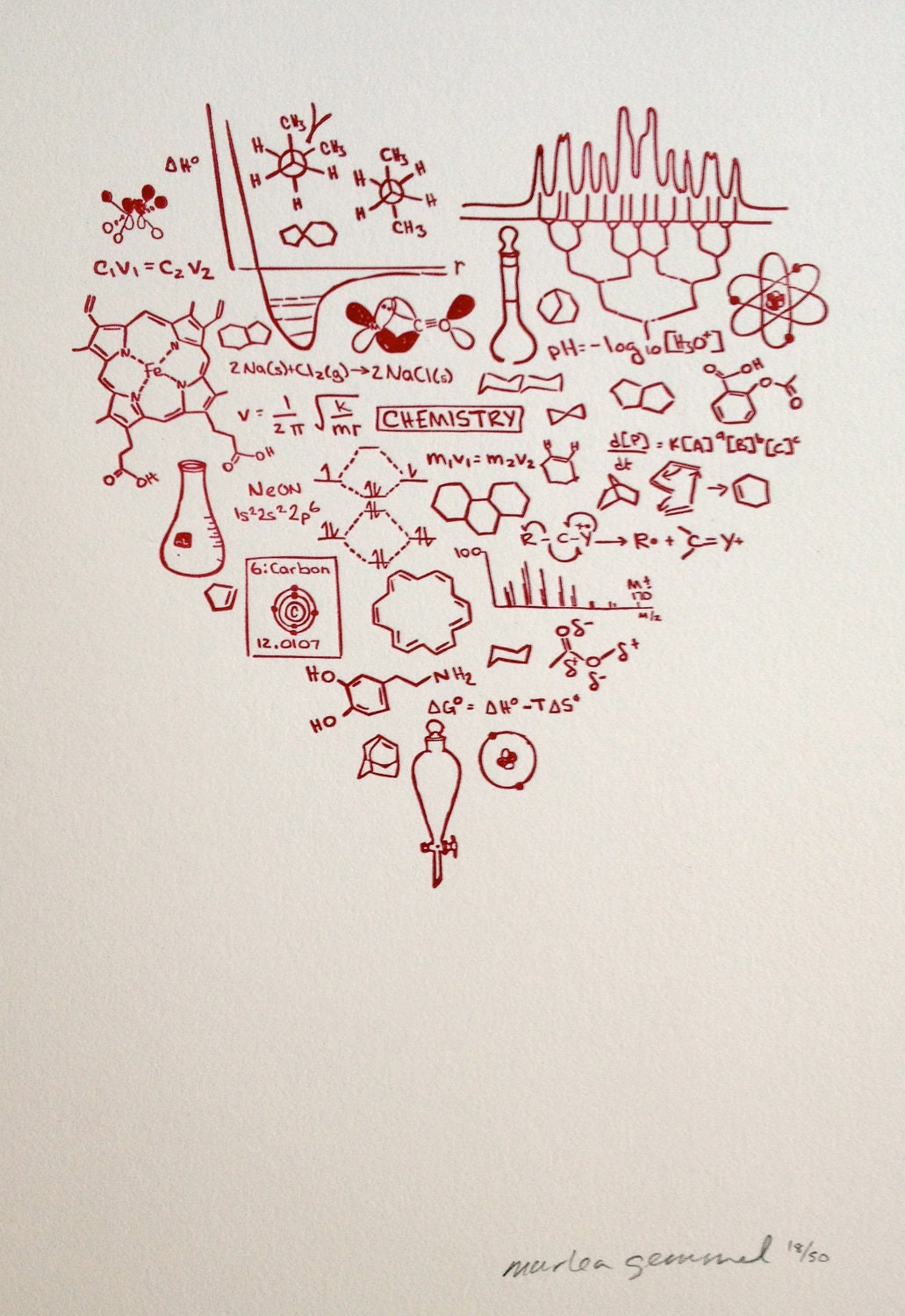31.12.2012
10.12.2012
про мск
Всё. Мои провидческие мысли стали реализовываться. Вот говорила я, что пройдет ещё немного времени и "стволовые клетки" начнут получать из практически всех биологических жидкостей, субстанций и вообще отходов. Думали, что менструальная кровь - это финал. Ни-фи-га. Теперь МСК получают и из мочи. Сегодня появился пруф. Скоро можно будет тупо плюнуть в пластиковую посудину с подходящей питательной средой - и вуаля - культура фибробластоподобных няшных клеточек.
Фисё, баста.
Фисё, баста.
29.09.2012
09.09.2012
Кофе вместо обезболивающих?
Очередное подтверждение полезности кофе:
Now comes word that a cuppa joe reduces physical pain. The surprising finding is based on a study involving 48 volunteers who agreed to spend 90 minutes performing fake computer tasks meant to mimic office work. The tasks were known to cause pain in the shoulders, neck, forearms and wrists, and the researchers wanted to compare how people with chronic pain and those who were pain-free tolerated the tasks. As a matter of convenience, the scientists allowed people to drink coffee before taking the test "to avoid unpleasant effects of caffeine deprivation, e.g. decreased vigor and alertness, sleepiness, and fatigue," they reported. But when it came time to analyze the data, the researchers from Norway's National Institute of Occupational Health and Oslo University Hospital noticed that the 19 people who drank coffee reported a lower intensity of pain than the 29 people who didn't. In the shoulders and neck, for instance, the average pain intensity was rated 41 (on a 100-point scale) among the coffee drinkers and 55 for the coffee abstainers. Similar gaps were found for all pain sites measured, and coffee's apparent pain-mitigation effect held up regardless of whether the subjects had chronic pain or not. The authors of the study, which was published this week in the journal BMC Research Notes, cautioned that since the study wasn't designed to test coffee's influence on pain, the results come with many uncertainties. For starters, the researchers don't know how much coffee the coffee drinkers consumed before taking the computer tests. They also doubt that the coffee drinkers and abstainers were similar in all respects except for their java consumption. Problems like these tend to undermine the importance of the findings. But those reservations are unlikely to trouble the legions of coffee drinkers looking for any reason not to cut back on their daily caffeine habit. (c)2012 Los Angeles Times Distributed by MCT Information Services
Read more at: http://medicalxpress.com/news/2012-09-benefit-coffee-pain.html#jCp
31.08.2012
Ограничение калорий - работает ли для всех видов?
Много сейчас говорят о таком интересном способе продления жизни как снижение потребляемых калорий. Показано множество успешных результатов на грызунах. Всё очень аргументировано и элегантно. Однако совсем недавно в сети появились сообщения о подобных опытах, проведённых на приматах. И там результаты оказались не столь однозначными.
Вот одно из таких сообщений:Calorie Restriction May Make Rats Live Longer, But Doesn’t Work For PrimatesСпасибо за наводку jtotheizzoe.
Remember those famous studies in worms, mice and rats that indicated that a restricted-calorie diet increased lifespan? Well, the results of a 30-year study in rhesus monkeys has just been reported, and the results make it pretty clear that it doesn’t apply to primates … likely including us.
The molecular pathways and gene circuits that are activated in our bodies as a result of long-term calorie restriction are immensely complicated. Like a tangled ball of yarn complicated. We don’t understand how they work, frankly, and there’s just no magic bullet when it comes to diet and lifespan in creatures like monkeys and humans (I’m looking at you, resveratrol). It’s certainly good for one’s long-term survival not to overeat into Honey-Boo-Boobesity, but what does current science say about calories, long life and naked apes?
Studies of humans who live past 100 point to genetics as more important than restricting calories. Which genes? Time may tell. And none of this has helped us understand how different diet compositions may affect aging.
Read more at Nature News.
18.08.2012
некоторые полезности
Эффективные услуги для продвижения сайтов от CheapTop.ru по разумной цене и даже бесплатно!
Хороший старт всякого сайта заключается в правильных действиях его создателя. Путь в ТОП поисковых систем непростой. И для того чтоб туда попасть, надо вложить много сил и приделить как можно больше внимания продвижению. Иначе веб-ресурс просто исчезнет в широких просторах интернета.
Раскрутка интернет-ресурса представляет собой комплекс мер направленный на рост позиций требуемого интернет-ресурса в выдаче поисковых систем. Все осознают, что одним из важнейших параметров в этом процессе есть наращивание ссылочной массы. Чем больше источников будут ссылаться на ваш интернет-ресурс, тем большую значимость ему смогут придавать поисковые системы.
Компания CheapTop готова предложить вам нижеперечисленные сервисы:
Регистрация в каталогах статей
Наращивать ссылочную массу можно всеми доступными инструментами. Примером такого являются каталоги статей. Такой каталог представляет собой веб-ресурс, на котором выкладывается оптимизированная тематическая статья с 2-мя ссылками на ваш сайт. К статье прикрепляется уникальное название и анонс. В чем достоинства ссылок с каталогов?- Ссылка с анкором.
- "Вечная" ссылка. Уже давно не нововведение, что чем больше возраст ссылки, тем выше ее вес. А в каталоге статей она будет стоять постоянно, это соответственно даст вашему интернет-ресурсу весомый результат.
- Текст около ссылки. На вес ссылки еще влияет контекст, в котором она стоит. А ежели тематика интернет-ресурса, а также тематика текста совпадают, то ссылке дается больший вес.
- Ссылка с авторитетного донора. Большинство каталогов статей имеют большие "пузомерки".
- Еще одним параметром, который определяет вес ссылки есть возраст сайта-донора, получается чем старше каталог статей, тем больший вес имеет ссылка с него. 80% всех используемых нами каталогов составляют преимущественно эти интернет-ресурсы.
Сабмит в соцзакладки
Соцзакладкиесть логичным продолжением идеи браузерных закладок, которые имеются у любого из нас. Лишь в рассматриваемом случае они доступны всем юзерам сети. Есть специализированные сервисы для хранения соцзакладок, там они систематизируются и разбиваются по группам. Таким образом, пользователь сможет при желании вернуться к нужной странице. Социальные закладки регулярно обновляются, что в свою очередь приводит к скорой индексации ресурса в общем. Данное явление связано с их хорошей популярностью и посещаемостью. Чем полезны ссылки с закладок?- Быстрая индексация ссылок. Так как информация на соцзакладках все время обновляется, пауки поисковых систем почти оставляют их. То есть, как только появилась новая закладка, ссылка на нее непосредственно через пару часов сможет появиться в выдаче поисковых систем.
- Увеличение посетителей и трафика на веб-ресурс. Соцзакладки есть одним из важных инструментов навигации в интернете. За день их громадное количество посетителей. Они меняются данными с другими юзерами и, таким образом, получается одна большая цепочка в которой невозможно найти конец. Это соответственно дает весомый прирост целевых посетителей на интернет-ресурс. При добавлении новая закладка автоматически публикуется на главной странице, что тоже дает неплохой эффект.
Комментарии в блогах
Всем известно естественный прирост ссылок дает хороший эффект. Ежели ожидать этого прироста не предпринимая ничего, пройдет достаточно много времени. Дабы поисковые системы убедились в том, что ваш интернет-ресурс действительно нужен людям, на него должны стоять ссылки поставленные преимущественно ими. Замечательным примером качественных ссылок есть блоги. Комментирование в блогах — это написание небольших сообщений в ответ на определенный пост или же статью с подкрепленными к ним ссылками на конкретный интернет-ресурс. В чем эффективность ссылок с блогов?- Возраст ссылки. Данная ссылка является постоянной, то есть она никуда не денется пока пост или статья не будет удален.
- Переходы по ссылке. Большая часть блогов в нашей базе есть ресурсами с большой посещаемостью. Поэтому, как только комментарий промодерируют ссылка станет кликабельной для всех пользователей.
- Качественный источник, что дает вес. Блоги проходят тщательный отбор прежде чем попасть к нам в базу.
Регистрация в каталогах сайтов
Каталоги сайтов - это сайты-хранилища ссылок. Ссылки классифицируются по темам и разделам для удобства поиска необходимой информации. Регистрация в каталогах сайтов является эффективным способом продвижения, потому что дает возможность достичь хорошего уровня увеличения числа ссылок. Преимуществами этого вида продвижения являются:- Сравнительно значимое количество получаемых ссылок.
- Высокая возможность увеличения параметров авторитетности
- Постоянные ссылки
Размещение объявлений на популярных досках
Размещение объявлений на популярных досках - один из значительных инструментов интернет-маркетинга. Данный способ раскрутки позволяет не только увеличить количество ссылок для вашего сайта, однако и выбрать для него уникальных пользователей. Его очень часто используют фирмы, реализующие какие-либо товары или же услуги. Чем полезны ссылки с досок объявлений?- Целевые пользователи. Доски объявлений есть хорошо посещаемыми ресурсами, следовательно, разместив тут личное объявление, прирост уникальных пользователей обеспечен, а это конечно же приведет к росту продаж.
- Возможность многократного постинга. Нет определенных запретов относительно периодичности размещения информации на досках. Можно заказывать описанную услугу ежедневно, никаких штрафных санкций поисковыми системами касательно продвигаемого сайта не предпринимается.
Это всё можно получить совершенно БЕСПЛАТНО!
У Вас есть сайт, но нет возможности или знаний для его раскрутки? Быть может вы желаете заработать на партнерке, конвертируя Ваших посетителей в деньги? Вы просто хотите заработать путем продажи ссылок со своего сайта, но не хотите тратить время и силы на наращивание параметров цитирования?Что ж, к делу! Вы хотите получить регистрацию в каталогах от признанного лидера рынка регистрационных услуг CheapTop?
А в дополнение еще и сабмит в сервисы социальных закладок?
Ко всему этому еще возможность зарабатывать!
Причем все это БЕСПЛАТНО!
Тогда Вам сюда <--
16.08.2012
Очередные новости об избавлении от опиатной зависимости
Действительно интересно. оказывается, на подходе очередное средство борьбы с героиновой и морфиновой наркоманией. Более того, учёные утверждают, что с помощью новейших подходов можно не только избавиться от зависимости, но и не страдать от болезненных ощущений. Подробности:
Unlike the heroin-specific vaccine we covered last year, an international team of scientists from the University of Adelaide in Australia and the University of Colorado Boulder has now found a way to block addiction to various opioid drugs, including heroin and morphine. Importantly, the new approach doesn’t negatively affect the pain-relieving properties of these drugs.За инфу спасибо http://www.gizmag.com/opioid-addiction-immune-system/23706/
The central nervous system and the immune system both play important roles in the development of an addiction, with opioid drugs such as heroin and morphine binding to an immune receptor known as Toll-like receptor 4 (TLR4) in a similar way to the normal immune response to bacteria. Dr. Mark Hutchinson, ARC Research Fellow in the University of Adelaide’s School of Medical Sciences says, “The problem is that TLR4 then acts as an amplifier for addiction.”
In studies on rats using (+)-naloxone, a drug that automatically shuts down the opioid addiction by altering brain chemistry to stop production of the feel-good chemical dopamine, the researchers found that blocking the immune response is all that is required to prevent cravings for opioid drugs.
“Our studies have shown conclusively that we can block addiction via the immune system of the brain, without targeting the brain’s wiring,” said Hutchinson, who was lead author of the study.
“This work fundamentally changes what we understand about opioids, reward and addiction,” adds senior author Professor Linda Watkins, from the Center for Neuroscience at CU-Boulder. “We’ve suspected for some years that TLR4 may be the key to blocking opioid addiction, but now we have the proof.
“The drug that we’ve used to block addiction, (+)-naloxone, is a non-opioid mirror-image drug that was created by Dr. Kenner Rice in the 1970s,” Watkins said. “We believe this will prove extremely useful as a co-formulated drug with morphine, so that patients who require relief for severe pain will not become addicted but still receive pain relief. This has the potential to lead to major advances in patient and palliative care.”
The researchers say clinical trials may be possible within the next 18 months.
The results of their study are being published in the August 15 edition of the Journal of Neuroscience.
Source: University of Adelaide
О накоплении ошибочных и непроверенных данных в науке
Вот ведь, наконец, этот вопрос забеспокоил не только нас с шефом. :) Столько всего делается в мире в фундаментальных областях, но столько взаимоисключающих результатов, что нормальный человек не может разобраться в этой массе данных сам. А надеяться исключительно на авторитет учёных - тоже опасно...
Актуальнейшая статейка на http://www.reuters.com/article/2012/08/14/us-science-replication-service-idUSBRE87D0I820120814
Актуальнейшая статейка на http://www.reuters.com/article/2012/08/14/us-science-replication-service-idUSBRE87D0I820120814
By Sharon Begley
NEW YORK | Tue Aug 14, 2012 9:25am EDT
(Reuters) - So many scientific studies are making incorrect claims that a new service has sprung up to fact-check reported findings by repeating the experiments.
A year-old Palo Alto, California, company, Science Exchange, announced on Tuesday its "Reproducibility Initiative," aimed at improving the trustworthiness of published papers. Scientists who want to validate their findings will be able to apply to the initiative, which will choose a lab to redo the study and determine whether the results match.
The project sprang from the growing realization that the scientific literature - from social psychology to basic cancer biology - is riddled with false findings and erroneous conclusions, raising questions about whether such studies can be trusted. Not only are erroneous studies a waste of money, often taxpayers', but they also can cause companies to misspend time and resources as they try to invent drugs based on false discoveries.
"‘Published' and ‘true' are not synonyms," said Brian Nosek, a psychology professor at the University of Virginia in Charlottesville and a member of the initiative's advisory board.
Last year, Bayer Healthcare reported that its scientists could not reproduce some 75 percent of published findings in cardiovascular disease, cancer and women's health.
In March, Lee Ellis of M.D. Anderson Cancer Center and C. Glenn Begley, the former head of global cancer research at Amgen, reported that when the company's scientists tried to replicate 53 prominent studies in basic cancer biology, hoping to build on them for drug discovery, they were able to confirm the results of only six.
The new initiative, said Begley, senior vice president of privately held biotechnology company TetraLogic, "recognizes that the problem of non-reproducibility exists and is taking the right steps to address it."
The initiative's 10-member board of prominent scientists will match investigators with a lab qualified to test their results, said Elizabeth Iorns, Science Exchange's co-founder and chief executive officer. The original lab would pay the second for its work. How much depends on the experiment's complexity and the cost of study materials, but should not exceed 20 percent of the original research study's costs. Iorns hopes government and private funding agencies will eventually fund replication to improve the integrity of scientific literature.
The two labs would jointly write a paper, to be published in the journal PLoS One, describing the outcome. Science Exchange will issue a certificate if the original result is confirmed.
Founded in 2011, Science Exchange serves as a clearinghouse that connects researchers who want to outsource parts of experiments, from DNA sequencing ($2.50 per sample) to bioinformatics ($50 per hour). It is funded largely by venture capitalists and angel investors.
INCENTIVES FOR INTEGRITY
It may not be obvious why scientists would subject their work to a test that might overturn its results, and pay for the privilege, but Iorns is optimistic. "It would show you are a high-quality lab generating reproducible data," he said. "Funders will look at that and be more likely to support you in the future."
If results are reproduced, "it will increase the value of any technology the researcher might try to license," she said, adding that it would also provide assurance to, say, a pharmaceutical company that the result is sound and might lead to a new drug.
Experts not affiliated with Science Exchange noted that if science were working as it should, the initiative would not be necessary. "Science is supposed to be self-correcting," said Begley. "What has surprised me is how long it takes science to self-correct." There are too many incentives to publish flashy, but not necessarily correct, results, he added.
Virginia's Nosek experienced the temptation firsthand. He and his colleagues recently ran a study in which 1,979 volunteers looked at words printed in different shades of gray and chose which hue on a color chart - from nearly black to almost white - matched that of the printed words. Self-described political moderates perceived the grays more accurately than liberals or conservatives, who literally saw the world in black and white, Nosek said.
Rather than publishing the study, Nosek and his colleagues redid it, with 1,300 people. The ideology/shades-of-gray effect vanished. They decided not to publish, figuring the first result was a false positive.
Typically, scientists must show that results have only a 5 percent chance of having occurred randomly. By that measure, one in 20 studies will make a claim about reality that actually occurred by chance alone, said John Ioannidis of Stanford University, who has long criticized the profusion of false results.
With some 1.5 million scientific studies published each year, by chance alone some 75,000 are probably wrong.
In addition, Ioannidis said, "people start playing with how they handle missing data, outliers, and other statistics," which can make a result look real when it's not.
"People are willing to cut corners" to get published in a top journal, he said.
There are numerous ways to do that. Researchers can stop collecting data as soon as they obtain the desired result rather than gather more as originally planned. Conversely, they can continue to gather data until they get the desired result.
How common might such sleights of hand be? In a 2005 paper in PLoS Medicine, Ioannidis used statistical and other methods to show that "most published research results are wrong." It remains the most-viewed paper in the journal's eight-year history.
"Until recently, people thought you could trust what's published," Ioannidis said. "But for whatever reason, we now see that we can't."
(Note: Amgen researcher C. Glenn Begley is not related to the author of this story, Sharon Begley.)
(Reporting by Sharon Begley; editing by Julie Steenhuysen and Douglas Royalty)
26.07.2012
Опять результаты исследований эффектов экстази
Ну, в общем, читайте: экстази и память, некоторые новые данные.
Though ecstasy is known to cause health risks such as depression, sleep problems, severe anxiety and increasing other drug cravings, there has been a considerable amount of debate questioning whether or not government officials have over-reacted to ecstasy.
Though ecstasy is known to cause health risks such as depression, sleep problems, severe anxiety and increasing other drug cravings, there has been a considerable amount of debate questioning whether or not government officials have over-reacted to ecstasy.
16.07.2012
Как достать всех в лабе
Гениальная статья о том, как стать "звездой" в лабе. Цитирую:
Спасибо http://bitesizebio.com/articles/how-to-be-the-lab-bastard/
We all know them. You might even be one. The Lab Bastard is the one who considers himself (or herself!) superior to all other mere mortals in the lab. He would never degrade his talent by doing communal jobs in the lab, but swans around, absolutely sure that his experiments are most important and his results will be the most groundbreaking.
Above all, The Lab Bastard never misses an opportunity to claw his way to the top and doesn’t mind who he tramples on along the way.
I hope you don’t want to be The Lab Bastard. But in case you do, here are some useful tips:
When starting in a new lab, establish your superior credentials:
1) Never miss an opportunity to say how thing were done much better in your previous lab/your country.
2) Do a bit of namedropping; it always helps to impress the poor no-hopers you work with.
3) Declare equipment, supplies and methods that your colleagues use as outdated and insufficient for your needs. Order a lot of new stuff immediately, or even better, tell a technician do it for you.
Ensure that your talents are not wasted on menial tasks. Put technicians and your other colleagues in their rightful place as servants who are lucky to have a bit part to play in your journey to brilliance:
4) Make a point of never ordering ANYTHING. Ensure that no matter how small the order is, you pass it off to someone else to do it for you.
5) Never do any lab jobs – defrosting the freezer, cleaning the water bath, etc. It distracts you from doing experiments and there is always a backup freezer/another water bath, when they break because of the lack of maintenance.
6) If you finish a communal solution, be happy that there was enough left for you. You either won’t need it for a while, or, if it is widely used, somebody else will have to make it very soon.
7) Feel free to take stuff from other people’s benches. They have plenty of it or are not using it at the moment and you are working so much, you don’t have time to prepare or order this in advance.
Help No-one
8) Never volunteer to help anybody and never share your things, this will diminish your resources in exchange for a hazy possibility that people will pay you back in kind. They never do, you know, because you don’t.
Claim your rightful credit
9) Always ensure that you talk loudest in lab meetings – if you can talk over others, then so much the better. When you are making your razor sharp observations, be sure to keep eye contact with the boss at all times to ensure that your brilliance is noted.
10) A caveat to number 8: There is a time to volunteer to help people, and that is when they are close to publishing. At this point, use all of your skills and influence to secure the opportunity to do a (preferably very small) piece of work for the prospective author, then push like hell to be added as a co-author.
Самое смешное - что такие везде находятся :)
03.07.2012
Хроническая боль - в голове!
О хронической боли. Новости:
When people have similar injuries, why do some end up with chronic pain while others recover and are pain free? The first longitudinal brain imaging study to track participants with a new back injury has found the chronic pain is all in their heads –- quite literally.
A new Northwestern Medicine study shows for the first time that chronic pain develops the more two sections of the brain --- related to emotional and motivational behavior --- talk to each other. The more they communicate, the greater the chance a patient will develop chronic pain.
The finding provides a new direction for developing therapies to treat intractable pain, which affects 30 to 40 million adults in the United States.
Researchers were able to predict, with 85 percent accuracy at the beginning of the study, which participants would go on to develop chronic pain based on the level of interaction between the frontal cortex and the nucleus accumbens.
The study is published in the journal Nature Neuroscience.
"For the first time we can explain why people who may have the exact same initial pain either go on to recover or develop chronic pain," said A. Vania Apakarian, senior author of the paper and professor of physiology at Northwestern University Feinberg School of Medicine.
"The injury by itself is not enough to explain the ongoing pain. It has to do with the injury combined with the state of the brain. This finding is the culmination of 10 years of our research."
The more emotionally the brain reacts to the initial injury, the more likely the pain will persist after the injury has healed. "It may be that these sections of the brain are more excited to begin with in certain individuals, or there may be genetic and environmental influences that predispose these brain regions to interact at an excitable level," Apkarian said.
The nucleus accumbens is an important center for teaching the rest of the brain how to evaluate and react to the outside world, Apkarian noted, and this brain region may use the pain signal to teach the rest of the brain to develop chronic pain.
"Now we hope to develop new therapies for treatment based on this finding," Apkarian added.
Chronic pain participants in the study also lost gray matter density, which is likely linked to fewer synaptic connections or neuronal and glial shrinkage, Apkarian said. Brain synapses are essential for communication between neurons.
"Chronic pain is one of the most expensive health care conditions in the U. S. yet there still is not a scientifically validated therapy for this condition," Apkarian said. Chronic pain costs an estimated $600 billion a year, according to a 2011 National Academy of Sciences report. Back pain is the most prevalent chronic pain condition.
A total of 40 participants who had an episode of back pain that lasted four to 16 weeks --- but with no prior history of back pain --- were studied. All subjects were diagnosed with back pain by a clinician. Brain scans were conducted on each participant at study entry and for three more visits during one year.
###
Northwestern University: http://www.northwestern.edu
15.06.2012
09.06.2012
Анимашка - распространение депрессии
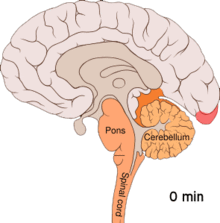
Animation of cortical spreading depression. Cortical spreading depression is a wave of electrophysiological hyperactivity followed by a wave of inhibition, usually in the visual cortex.Increased extracellular potassium ion concentration and excitatory glutamate contribute to the initiation and propagation of cortical spreading depression, which is the underlying cause of migraine aura.
source: wikipedia
04.06.2012
DNA lab: Newton's Three Laws of Graduation - аспирантские законы
DNA lab: Newton's Three Laws of Graduation: Thx, Andrej:-) M
Градуация аки гравитация. Хорошая идея. :) Главное - законы близки многим аспирантам и соискателям. :)
03.06.2012
Две дофаминовых новости
Дофаминушка опять в новостях. Первое сообщение - о трудоголизме и распределении дофамина в разных участках мозга, а второе - о влиянии этого нейромедиатора на процессы запоминания и забывания информации.
Наслаждайтесь.27.05.2012
Вот так мы слышим
Люблю такие образовательные штуки. В данном видео описывается процесс восприятия информации органом слуха. Наслаждайтесь!
18.05.2012
Чем грозит устранение бесплодия будущим эмбрионам?
Наткнулась на статью на
http://www.laboratoryequipment.com/news-Fertility-Treatment-Heightens-Risk-of-Birth-Defects-050712.aspx о том, что применение некоторых средств борьбы с бесплодием повышает риск появления дефектов развития у плода... Интересное исследование...
Fertility Treatments Heighten Risk of Birth Defects
May 7, 2012

A six week embryonic age or eight week gestational age intact Embryo, found in a Ruptured Ectopic pregnancy case. Image: Vilas Gayakwad, Wikimedia
A Univ. of Adelaide study has identified the risk of major birth defects associated with different types of assisted reproductive technology.
In the most comprehensive study of its kind in the world, researchers from the Univ.’s Robinson Institute have compared the risk of major birth defects for each of the reproductive therapies commonly available internationally, such as: IVF (in vitro fertilization), ICSI (intracytoplasmic sperm injection) and ovulation induction. They also compared the risk of birth defects after fresh and frozen embryo transfer.
The results are being published in the prestigious New England Journal of Medicine, and presented in Barcelona, Spain at the World Congress on Building Consensus in Gynecology, Infertility and Perinatology.
"While assisted reproductive technologies are associated with an increased risk of major birth defects overall, we found significant differences in risk between available treatments," says the lead author of the study, Associate Prof. Michael Davies from the Univ. of Adelaide’s Robinson Institute and School of Paediatrics and Reproductive Health.
Researchers linked a census of more than 6100 assisted reproductive technology births in South Australia to a registry of more than 300,000 births and 18,000 birth defects. They compared risks of birth defects across all infertility treatments to pregnancies in women with no record of infertility. They also compared successive pregnancies for women.
Previous studies have identified an increased risk of birth defects associated with infertility treatment, but this is the first study to compare all forms of available treatment. This is also the first study to compare pregnancies within women by the treatments received.
"The unadjusted risk of any birth defect in pregnancies involving assisted conception was 8.3 percent (513 defects), compared with 5.8 percent for pregnancies not involving assisted conception (17,546 defects)," Davies says.
"The risk of birth defects for IVF was 7.2 percent (165 birth defects); and the rate for ICSI was higher at 9.9 percent (139 defects). A history of infertility, either with or without assisted conception, was also significantly associated with birth defects. While factors associated with the causes of infertility explained the excess risk associated with IVF, the increased risk for a number of other treatments could not readily be explained by patient factors. ICSI, for instance, had a 57 percent increase in the odds of major defect, although the absolute size of the risk remained relatively small," he says.
Davies says cryopreservation (freezing) of embryos was associated with a substantially reduced risk of birth defects, particularly for ICSI. "This may be due to developmentally compromised embryos failing to survive the freeze/thaw process," he says.
Also of concern was the tripling of risk in women using clomiphene citrate to stimulate ovulation outside of a closely supervised clinical setting.
"While confined to a small group in our study, this is of particular concern as clomiphene citrate is now very widely available at low cost, and may easily be used contrary to manufacturers' very specific instructions to avoid use if pregnant, as it may cause fetal malformations. This aspect of the study will need additional confirmation from future research," Davies says.
He says the study now needs to be expanded to include more recent years of treatment, as the reproductive technologies have undergone continual innovation which may influence the associated risks of treatment.
Source: Univ. of Adelaide
Fertility Treatments Heighten Risk of Birth Defects
May 7, 2012
A six week embryonic age or eight week gestational age intact Embryo, found in a Ruptured Ectopic pregnancy case. Image: Vilas Gayakwad, Wikimedia
A Univ. of Adelaide study has identified the risk of major birth defects associated with different types of assisted reproductive technology.
In the most comprehensive study of its kind in the world, researchers from the Univ.’s Robinson Institute have compared the risk of major birth defects for each of the reproductive therapies commonly available internationally, such as: IVF (in vitro fertilization), ICSI (intracytoplasmic sperm injection) and ovulation induction. They also compared the risk of birth defects after fresh and frozen embryo transfer.
The results are being published in the prestigious New England Journal of Medicine, and presented in Barcelona, Spain at the World Congress on Building Consensus in Gynecology, Infertility and Perinatology.
"While assisted reproductive technologies are associated with an increased risk of major birth defects overall, we found significant differences in risk between available treatments," says the lead author of the study, Associate Prof. Michael Davies from the Univ. of Adelaide’s Robinson Institute and School of Paediatrics and Reproductive Health.
Researchers linked a census of more than 6100 assisted reproductive technology births in South Australia to a registry of more than 300,000 births and 18,000 birth defects. They compared risks of birth defects across all infertility treatments to pregnancies in women with no record of infertility. They also compared successive pregnancies for women.
Previous studies have identified an increased risk of birth defects associated with infertility treatment, but this is the first study to compare all forms of available treatment. This is also the first study to compare pregnancies within women by the treatments received.
"The unadjusted risk of any birth defect in pregnancies involving assisted conception was 8.3 percent (513 defects), compared with 5.8 percent for pregnancies not involving assisted conception (17,546 defects)," Davies says.
"The risk of birth defects for IVF was 7.2 percent (165 birth defects); and the rate for ICSI was higher at 9.9 percent (139 defects). A history of infertility, either with or without assisted conception, was also significantly associated with birth defects. While factors associated with the causes of infertility explained the excess risk associated with IVF, the increased risk for a number of other treatments could not readily be explained by patient factors. ICSI, for instance, had a 57 percent increase in the odds of major defect, although the absolute size of the risk remained relatively small," he says.
Davies says cryopreservation (freezing) of embryos was associated with a substantially reduced risk of birth defects, particularly for ICSI. "This may be due to developmentally compromised embryos failing to survive the freeze/thaw process," he says.
Also of concern was the tripling of risk in women using clomiphene citrate to stimulate ovulation outside of a closely supervised clinical setting.
"While confined to a small group in our study, this is of particular concern as clomiphene citrate is now very widely available at low cost, and may easily be used contrary to manufacturers' very specific instructions to avoid use if pregnant, as it may cause fetal malformations. This aspect of the study will need additional confirmation from future research," Davies says.
He says the study now needs to be expanded to include more recent years of treatment, as the reproductive technologies have undergone continual innovation which may influence the associated risks of treatment.
Source: Univ. of Adelaide
16.05.2012
Постеры со знаменитыми учёными!
Обалденные постеры с именами учёных. Авторская страница - http://www.flickr.com/photos/meganleewelch/sets/72157623306288307/
плетение паутины пауками
Отличный материал с http://www.nsf.gov/news/news_summ.jsp?org=NSF&cntn_id=123041&preview=false о механизмах, лежащих в основе плетения паутины:
|
20.04.2012
14.03.2012
24.02.2012
Юмористическое обращение авторов к рецензентам научной статьи
Это развеселило меня на несколько часов. С учётом того, что сейчас моя статья тоже находится на очередной рецензии, всё звучит достаточно остро. :) Наслаждайтесь:
by Roy F. Baumeister
Dear Sir, Madame, or Other:http://astro.berkeley.edu/~mwhite/referee_funny.html
Enclosed is our latest version of Ms # 85-02-22-RRRRR, that is, the re-re-re-revised revision of our paper. Choke on it. We have again rewritten the entire manuscript from start to finish. We even changed the goddamn running head! Hopefully we have suffered enough by now to satisfy even you and your bloodthirsty reviewers.
I shall skip the usual point-by-point description of every single change we made in response to the critiques. After all, it is fairly clear that your reviewers are less interested in details of scientific procedure than in working out their personality problems and sexual frustrations by seeking some kind of demented glee in the sadistic and arbitrary exercise of tyrannical power over helpless authors like ourselves who happen to fall into their clutches. We do understand that, in view of the misanthropic psychopaths you have on your editorial board, you need to keep sending them papers, for if they weren't reviewing manuscripts they'd probably be out mugging old ladies or clubbing baby seals to death. Still, from this batch of reviewers, C was clearly the most hostile, and we request that you not ask him or her to review this revision. Indeed, we have mailed letter bombs to four or five people we suspected of being reviewer C, so if you send the manuscript back to them the review process could be unduly delayed.
Some of the reviewers' comments we couldn't do anything about. For example, if (as review C suggested) several of my recent ancestors were indeed drawn from other species, it is too late to change that. Other suggestions were implemented, however, and the paper has improved and benefited. Thus, you suggested that we shorten the manuscript by 5 pages, and we were able to accomplish this very effectively by altering the margins and printing the paper in a different font with a smaller typeface. We agree with you that the paper is much better this way.
One perplexing problem was dealing with suggestions #13-28 by Reviewer B. As you may recall (that is, if you even bother reading the reviews before doing your decision letter), that reviewer listed 16 works that he/she felt we should cite in this paper. These were on a variety of different topics, none of which had any relevance to our work that we could see. Indeed, one was an essay on the Spanish-American War from a high school literary magazine. The only common thread was that all 16 were by the same author, presumably someone whom Reviewer B greatly admires and feels should be more widely cited. To handle this, we have modified the Introduction and added, after the review of relevant literature, a subsection entitled "Review of Irrelevant Literature" that discusses these articles and also duly addresses some of the more asinine suggestions in the other reviews.
We hope that you will be pleased with this revision and will finally recognize how urgently deserving of publication this work is. If not, then you are an unscrupulous, depraved monster with no shred of human decency. You ought to be in a cage. May whatever heritage you come from be the butt of the next round of ethnic jokes. If you do accept it, however, we wish to thank you for your patience and wisdom throughout this process and to express our appreciation of your scholarly insights. To repay you, we would be happy to review some manuscripts for you; please send us the next manuscript that any of these reviewers submits to your journal.
Assuming you accept this paper, we would also like to add a footnote acknowledging your help with this manuscript and to point out that we liked the paper much better the way we originally wrote it but you held the editorial shotgun to our heads and forced us to chop, reshuffle, restate, hedge, expand, shorten, and in general convert a meaty paper into stir-fried vegetables. We couldn't, or wouldn't, have done it without your input.
Sincerely,
17.02.2012
Аспирантам посвящается
http://dna-protein.blogspot.com/2012/02/subjectivity-in-research.html
Бугага. А ведь в науке реально чаще всего всё именно так и происходит... К сожалению или к счастью. :)
Бугага. А ведь в науке реально чаще всего всё именно так и происходит... К сожалению или к счастью. :)
14.02.2012
05.02.2012
Дрозофилье объявление о знакомстве
Немножко научного бугагизма.
Объявление, которое могла бы написать в мушиную газетёнку одинокая Дрозофилка:
Спасибо http://www.bios.niu.edu/bios308/funnies.htm
Объявление, которое могла бы написать в мушиную газетёнку одинокая Дрозофилка:
Спасибо http://www.bios.niu.edu/bios308/funnies.htm
05.01.2012
Опиаты более страшны для людей с психическими проблемами
С праздничками, коллеги!
Вот вам свежая новость от капитана Очевидность.
Оказывается, люди с психическими расстройствами (биполярный психоз, депрессия и т.д.) более подвержены зависимости от опиатов. Полный текст на http://www.biologynews.net/archives/2011/12/13/opioid_abuse_linked_to_mood_and_anxiety_disorders_.html
Да вы что!1111111111111 Оо
Вот вам свежая новость от капитана Очевидность.
Оказывается, люди с психическими расстройствами (биполярный психоз, депрессия и т.д.) более подвержены зависимости от опиатов. Полный текст на http://www.biologynews.net/archives/2011/12/13/opioid_abuse_linked_to_mood_and_anxiety_disorders_.html
Да вы что!1111111111111 Оо
Подписаться на:
Комментарии (Atom)

